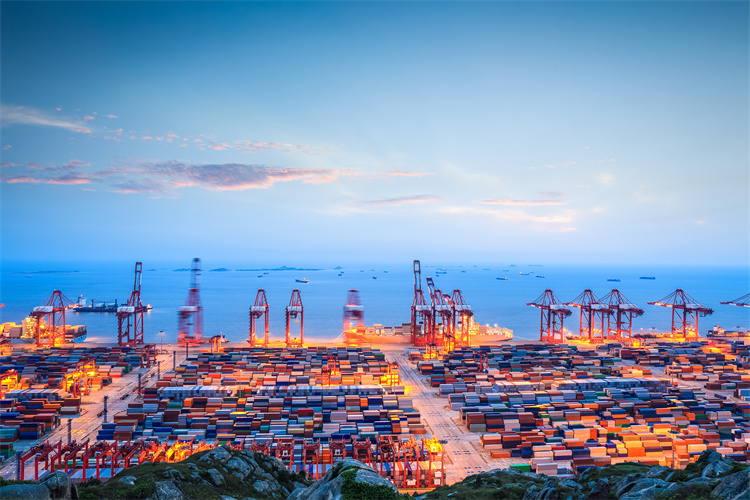Top Logistics Industry Trends Shaping the Future in 2025

The logistics industry is changing quickly. By 2025, it may grow from $8.96 trillion in 2023 to $15.79 trillion. New tools like AI and robots are improving work. Early users save 15% on costs and manage inventory 35% better. Online shopping increases the need for smarter logistics systems.
Key Takeaways
AI and robots are changing how logistics work. Companies using them save money and work faster, making more profit.
Being eco-friendly is very important now. Companies that go green help the Earth and look better to customers.
Using data is key for smart choices. Live data helps companies plan well and fix problems fast, keeping customers happy.
Key Logistics Industry Trends in 2025
The Role of AI and Automation in Logistics
AI and automation are changing logistics in big ways by 2025. Companies use AI to guess demand, plan routes, and cut costs. For example, Uber Freight uses machine learning to set better prices and work faster. ThroughPut’s AI tools saved €3.5 million yearly by lowering surprise costs.
AI is helping many industries see big improvements. Over 61% of factory leaders report lower costs, and 53% see more income. About one-third even gained over 5% more revenue. These changes show how AI and automation make logistics quicker and smarter.
Sustainability as a Driving Force
Sustainability is very important in 2025. Companies are using eco-friendly methods to cut pollution and save energy. The Carbon Trust says logistics could lower greenhouse gases by 20% by 2030. Also, 85% of companies have waste-cutting plans, and 60% invest in green tools.
These actions help the planet and improve company image. By focusing on sustainability, businesses meet customer needs and follow rules, ensuring future success.
Enhancing Supply Chain Resilience
Strong supply chains are a must in 2025. Companies are creating better networks and finding new suppliers to avoid problems. Over 78% of businesses now keep extra stock, and 76% use smart planning systems. AI is also growing, with 91% of manufacturers mixing AI with supply chain data.
These steps make it easier to handle issues and stay flexible. Stronger supply chains mean smoother work and happier customers in a tricky logistics world.
Data-Driven Decision-Making in Logistics
Data is key for logistics in 2025. Real-time shipping info and weather updates help plan better routes and avoid delays. Smart tools in control centers spot problems early and predict trends, helping quick decisions.
Using data makes work faster and gives an edge over others. Shippers using data-driven plans report better profits and happier customers. This method makes logistics smarter and more dependable.
Innovations Changing the Logistics Industry
Generative AI for Better Predictions
Generative AI is changing logistics by improving predictions. It helps guess demand, manage inventory, and cut costs more accurately. Companies using it see 95% better inventory accuracy and 25% lower storage costs. It also reduces risks, with 73% of businesses saying it helps decisions.
This AI studies huge amounts of data to find patterns. It predicts problems and helps adjust plans early. Adding AI to logistics gives smarter planning and a strong advantage.
Robots and Automation in Warehouses
Robots and automation are making warehouses work better. Autonomous robots can triple work speed and pay off in a year. Many companies mix robots with workers to boost efficiency.
Automation lowers costs and improves speed and accuracy. Robots make picking and packing faster, helping orders ship quicker. Using this tech makes logistics stronger and easier to grow.
Tools for Planning Scenarios
Advanced planning tools help prepare for logistics challenges. Companies like DB Schenker Bulgaria use AI to test plans and improve routes. These tools use simulations to predict outcomes with great accuracy.
They let you study different situations and choose the best options. This makes supply chains stronger and more efficient. These tools keep you ready in a fast-changing industry.
Industry-Specific Supply Chain Trends
E-commerce Growth and Its Impact on Logistics
Online shopping is changing logistics in big ways. By 2030, e-commerce could grow to $1,328.5 billion, rising fast at 19.5% yearly. This growth needs quicker deliveries and smarter systems. More people using the internet, especially in growing countries, adds to this rise. Companies now focus on last-mile delivery, which makes up over half of shipping costs.
The COVID-19 pandemic sped up this trend. Lockdowns made people shop online more, increasing the need for better logistics. Shopping across countries has also grown, needing advanced tools to track and manage goods. Companies that adjust to these changes will stay ahead by 2025.
Vertical Market Expansion in Healthcare and Automotive
Healthcare and car industries need special supply chain solutions. These areas have complex needs and strict rules. For example, healthcare must safely move items like vaccines that need cold storage. Car makers depend on quick deliveries for parts to build vehicles.
The car industry is going digital, focusing on electric cars and smart tech. This shift needs new systems for moving batteries and setting up charging spots. Healthcare logistics need careful handling and rule-following, making experts important. These industries show why strong and creative supply chains matter.
Environmental Sustainability in Supply Chains
Green practices are now a big focus in logistics. Companies like Patagonia and Unilever have cut pollution and saved energy. Patagonia lowered its impact by 40%, and Unilever got 20% more efficient.
Working closely with suppliers helps save energy and improve systems by 20%. Tracking green goals also shows results, like using 12% less energy. Companies that go green not only help the planet but also meet customer and law demands. In 2025, being eco-friendly will keep driving new ideas in logistics.
JUSDA’s Role in Shaping Logistics Trends
JUSDA’s Warehouse Solutions for 2025
JUSDA is improving warehouses to work better by 2025. They use advanced systems to make every step more efficient. From receiving goods to shipping them out, they focus on key goals. These include using docks well, keeping inventory correct, and delivering on time. JUSDA also cares about the environment. They track energy use and cut waste to stay eco-friendly.
Their warehouses use smart tools like AI and automation. These tools make work faster and more accurate. For example, they shorten walking distances for workers and boost productivity. Worker safety is very important too. Employees get regular training, and accidents are closely watched. By mixing new ideas with great operations, JUSDA keeps supply chains strong and reliable.
JusLink Intelligent Supply Chain Platform
The JusLink platform makes logistics smarter with real-time data. It offers many benefits that improve supply chain management:
Benefit | Description |
|---|---|
Cuts down on communication and supply chain costs. | |
Big Data Analysis | Spots problems early and finds new product chances. |
One-Stop Solutions | Combines services to give clients custom options. |
This platform uses AI and big data to solve problems early. It gives you a clear view of your supply chain. This helps you make quick and smart decisions. JusLink’s all-in-one solutions make hard logistics tasks easier. It’s a powerful tool for businesses wanting to lead in 2025.
Industry-Specific Solutions by JUSDA
JUSDA creates special solutions for industries like healthcare, cars, and online shopping. For healthcare, they safely move items like vaccines using special storage. In the car industry, JUSDA helps with electric car batteries and charging stations.
Online stores benefit from JUSDA’s help with global shipping and fast deliveries. They use automation and data to handle tough logistics problems. By solving these challenges, JUSDA leads the way in shaping logistics for 2025.
Challenges and Solutions in the Logistics Industry

Fixing Worker Shortages with Automation
Worker shortages are a big problem in logistics. Many companies can’t find enough workers for simple tasks. Automation helps by taking over these repetitive jobs. For example:
Over 53% already use or plan to use AI soon.
54% of leaders automate tasks to work faster.
Automation fills worker gaps and makes work more efficient. AI handles big data, helping decisions happen faster. It also keeps operations running smoothly. Using automation reduces the need for workers and boosts productivity.
Handling Rules and Global Risks
Changing rules and global problems make logistics tricky. Tariffs, trade limits, and conflicts can mess up supply chains. To deal with this, companies check risks carefully:
Step | What It Does |
|---|---|
Finds weak spots in supply chains, rules, and markets. | |
Impact Study | Measures how risks like tariffs affect costs and profits. |
Studying risks and spreading out operations lowers problems. Working with trade partners and knowing the latest rules keeps things running better.
Solving Supply Chain Problems
Supply chain issues can stop work and hurt profits. Companies now focus on making supply chains stronger. Two key ideas are time to recover (TTR) and time to survive (TTS). For example, CACI, a logistics company, had trouble buying supplies. By using Ivalua’s digital tools, they followed rules 95% of the time and cut costs by 30%.
By early 2024, over 86% of manufacturers are changing supply chains to avoid risks. Moving closer to customers and using smart tech like AI helps. These steps make it easier to handle problems and keep things running smoothly.

JUSDA Solutions
To provide you with professional solutions and quotations.
The logistics field in 2025 will grow with new ideas. More people like eco-friendly brands, with 66% choosing green options. Online shopping will increase logistics needs by 15%. Using automation and eco-friendly vehicles can save 20% on costs. Businesses using smart tools and staying flexible will succeed.
See Also
Five Leading Logistics Programs To Watch In 2024
Five Key Trends Shaping Future Supply Chain Efficiency
Transforming Logistics: The Role Of AI In Supply Chains
Exploring Future Logistics Through Innovative Technology Breakthroughs
Navigating Future Logistics Using Advanced Digital Technologies
